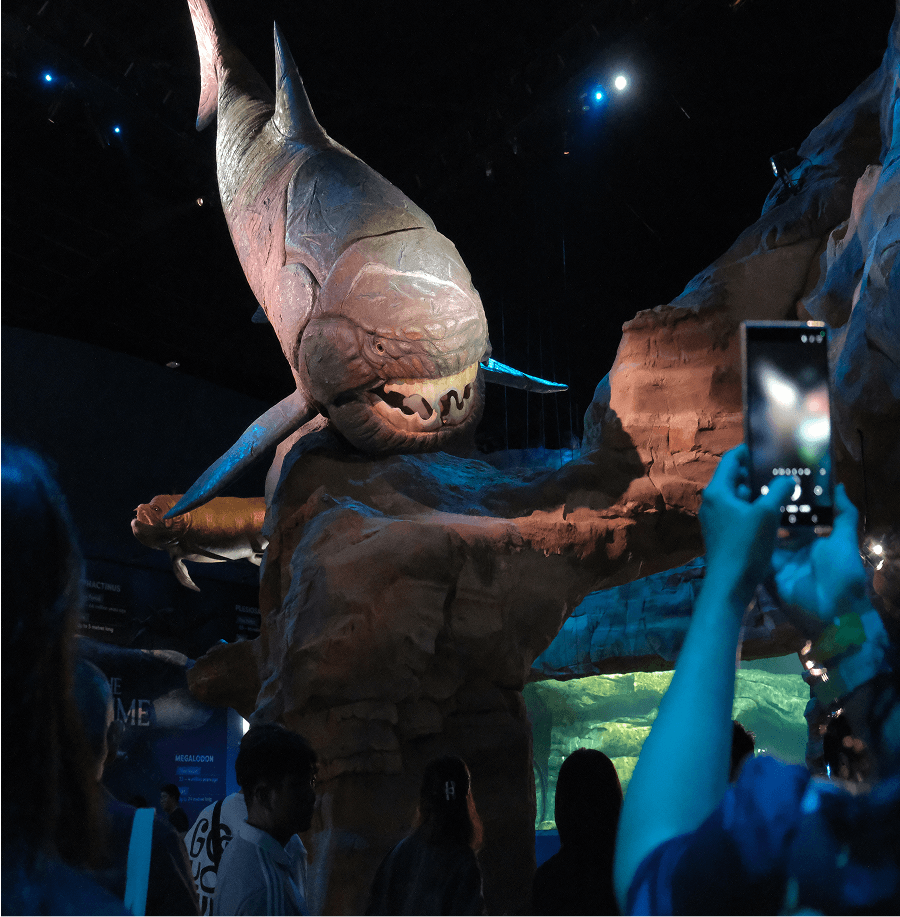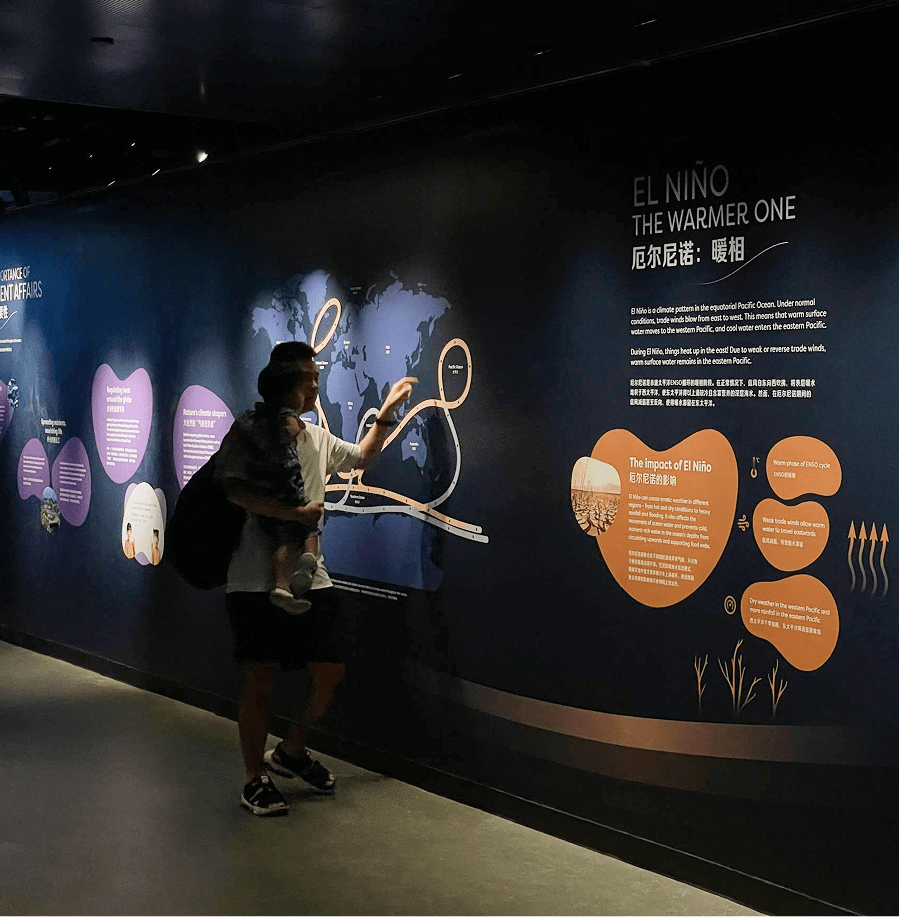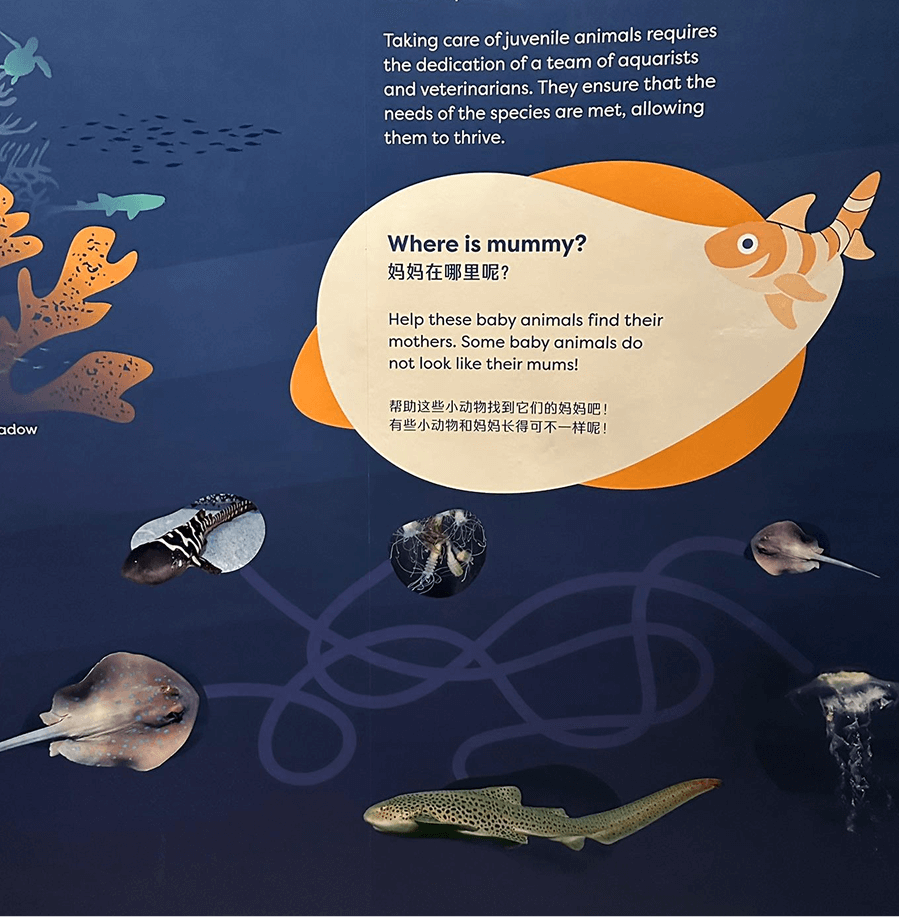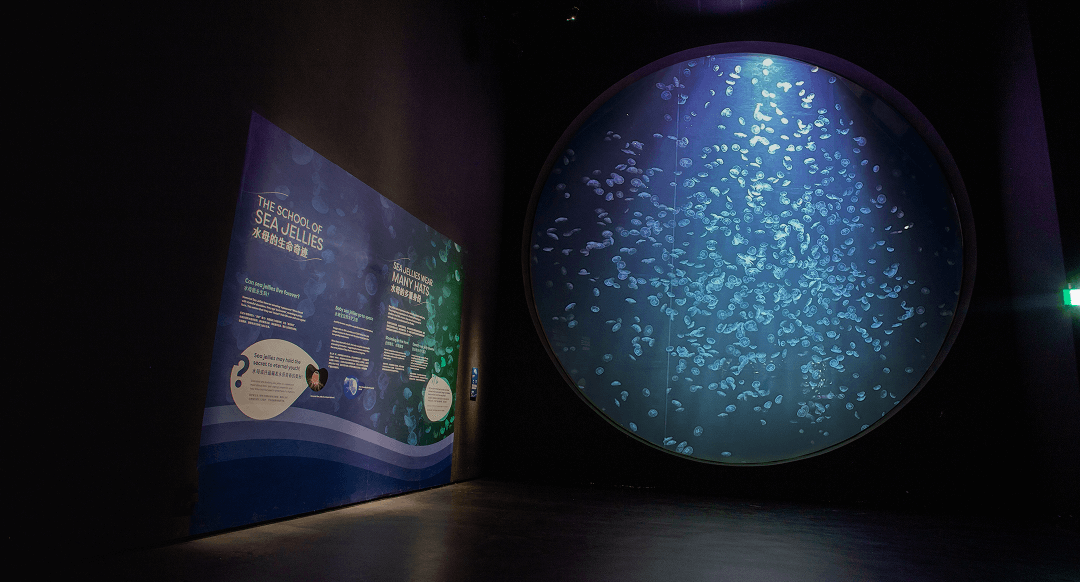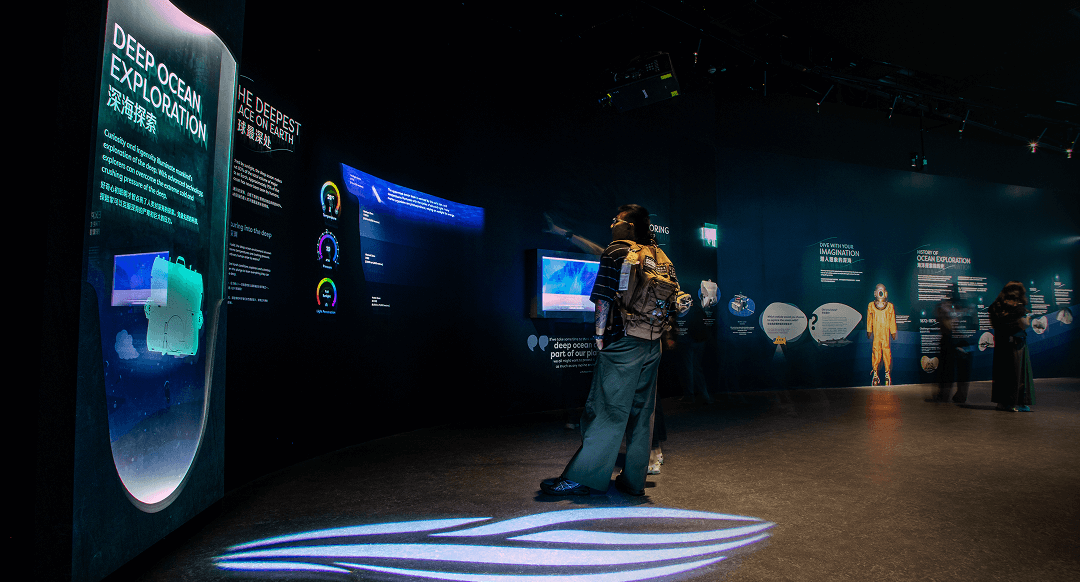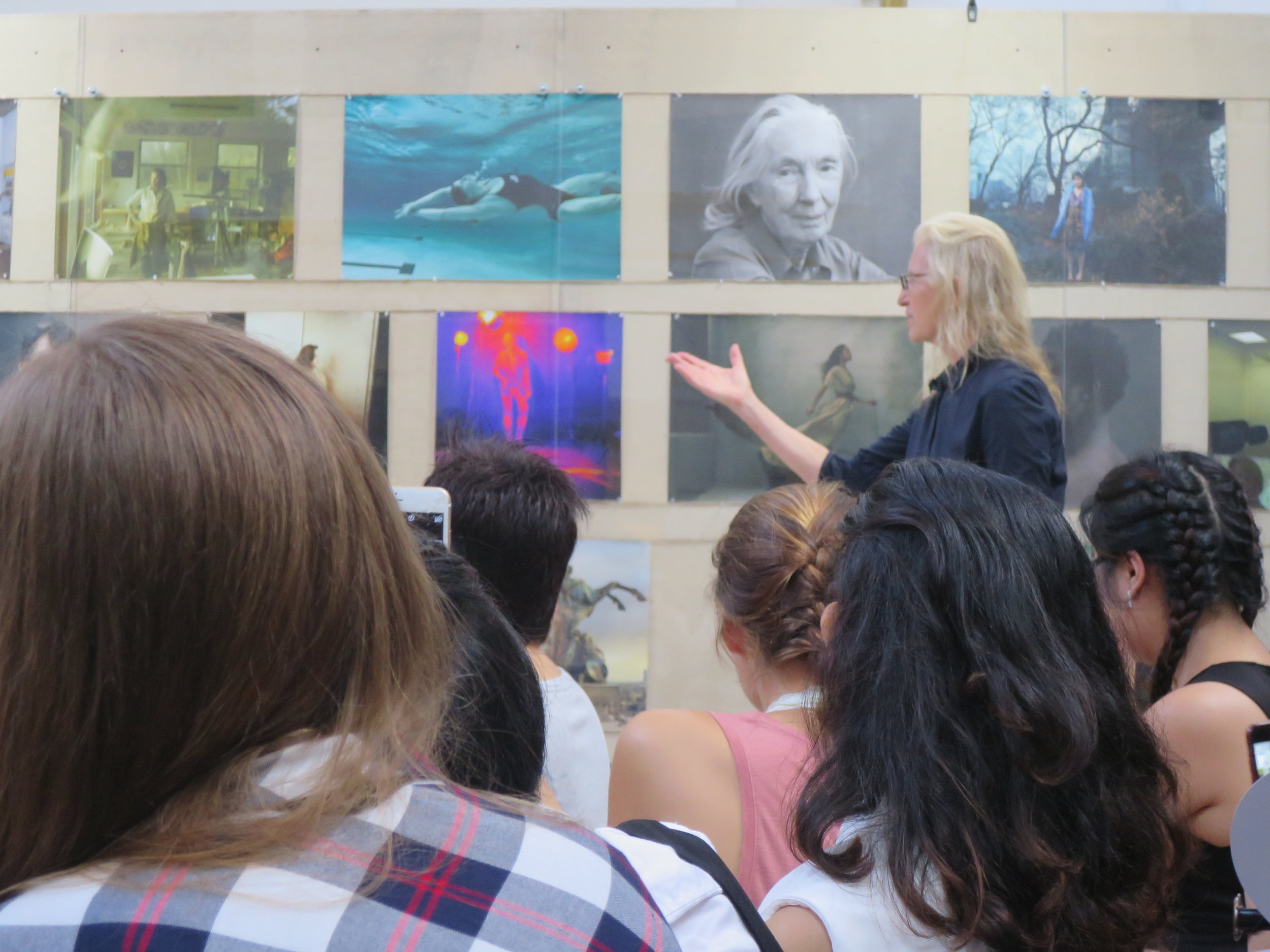Anchoring the experience on the theme of “wonder”, we chose stories from the ocean’s past, beauty and state of vulnerability – stories designed to make the audience go “wow”.
These stories highlight and explain many of the ocean’s wonders that were once unimaginable to the layperson. They transport the audience to a place of wonderment, evoking responses ranging from awe and admiration to joy and even a sense of urgency.
Beyond wonder, the experience was also framed with the themes of time and depth. These themes create meaning, which helps the audience understand and remember the information better. They also contextualise the assorted stories and marine animals into patterns, which allow the audience to experience logical narrative arcs through history and space.
With the time pattern, the audience recognises a story from the past to the present. With the depth pattern, they see the shallow coast transitioning to the deep sea and then to the dark unknown.
These ways of organising the stories help the audience experience the oceanarium with a clearer mental model of the ocean. They are less likely to be overwhelmed by the vast experience and more likely to learn more about the ocean and marine life.
Resonating with the stories, the audience becomes more inclined to appreciate and even cherish the ocean. They may find themselves caring more deeply about the ocean and be willing to contribute to marine conservation and sustainability.



